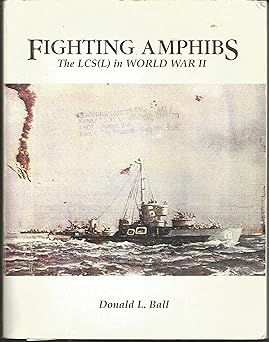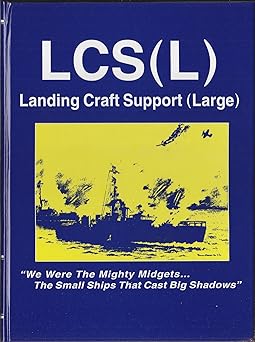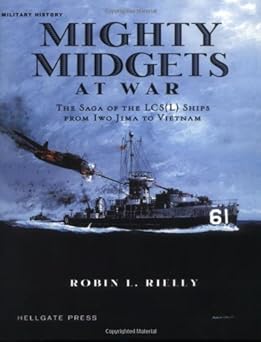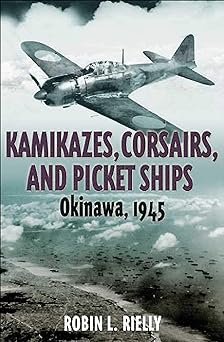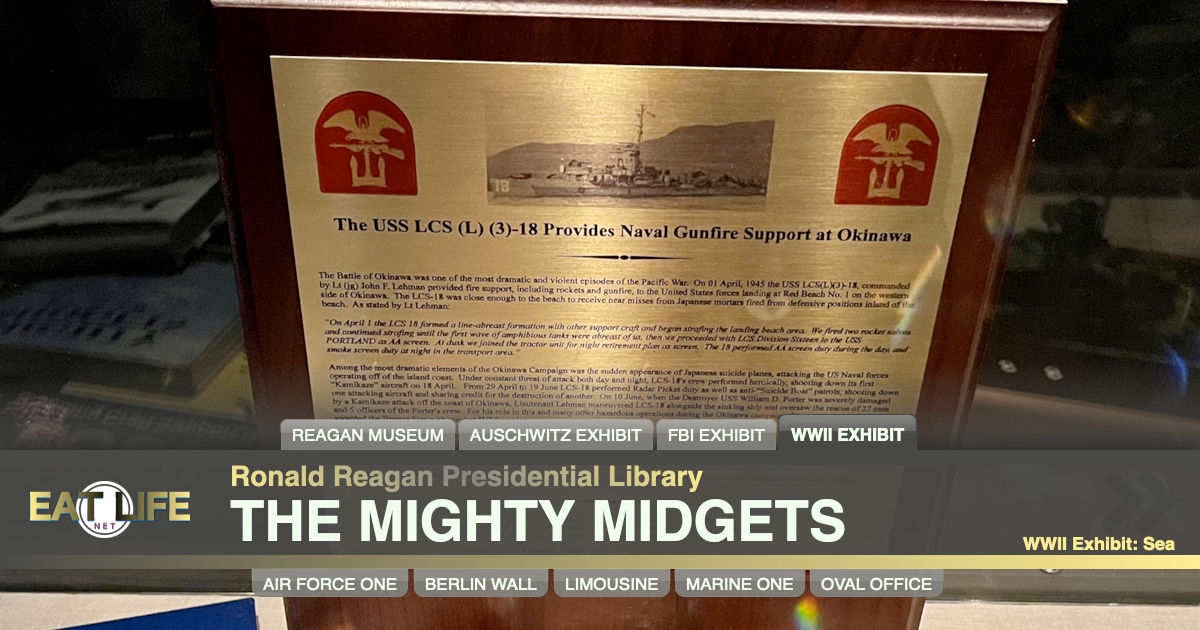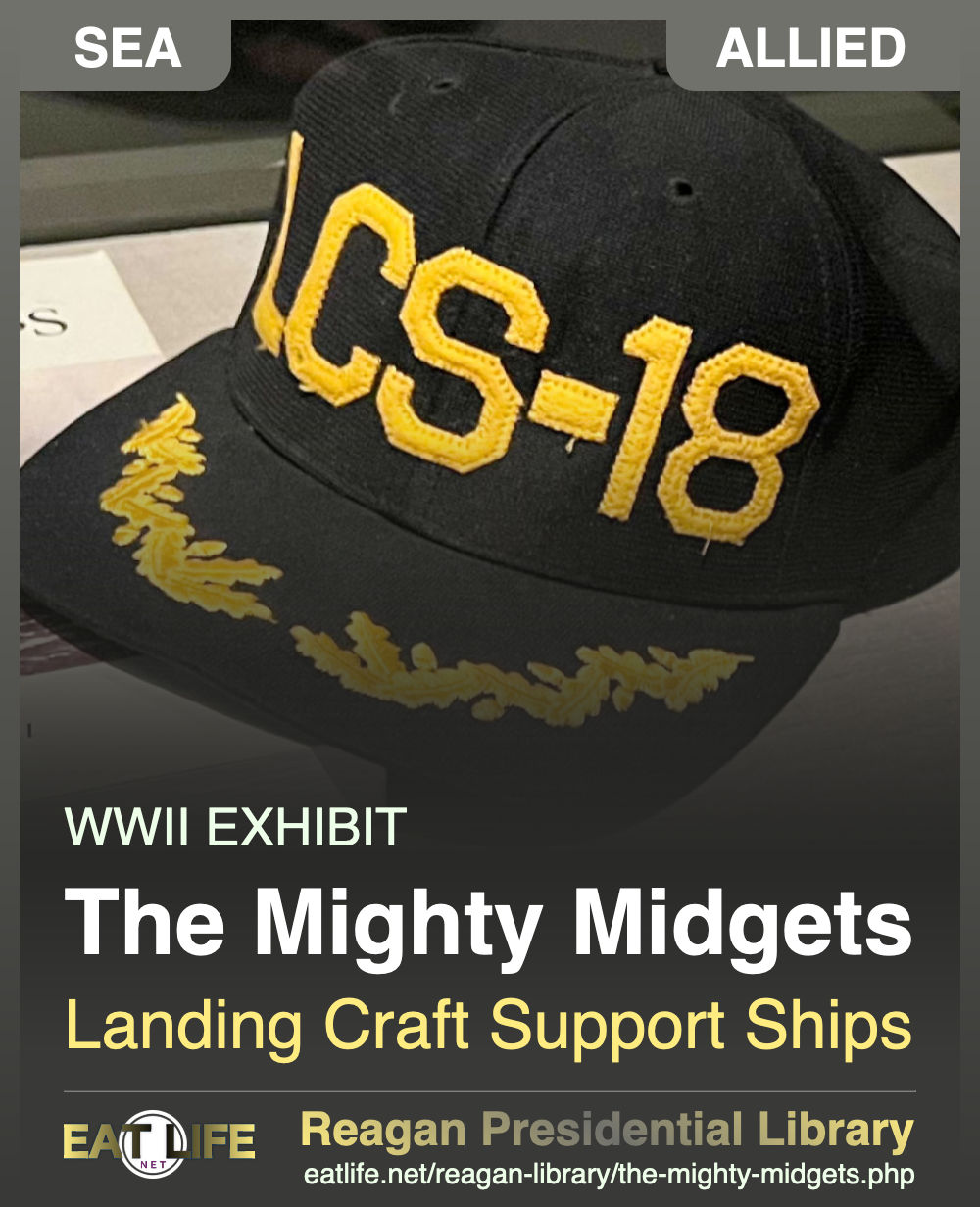Gunboats developed in 1944 to support amphibious landings, intercept enemy boats, and clear mines. They would intercept Japanese suicide boats that attempted to ram into American Navy ships. They were fire support from incoming kamikaze air raids for destroyers. These ships and their crews would distinguish themselves in combat over and over again.
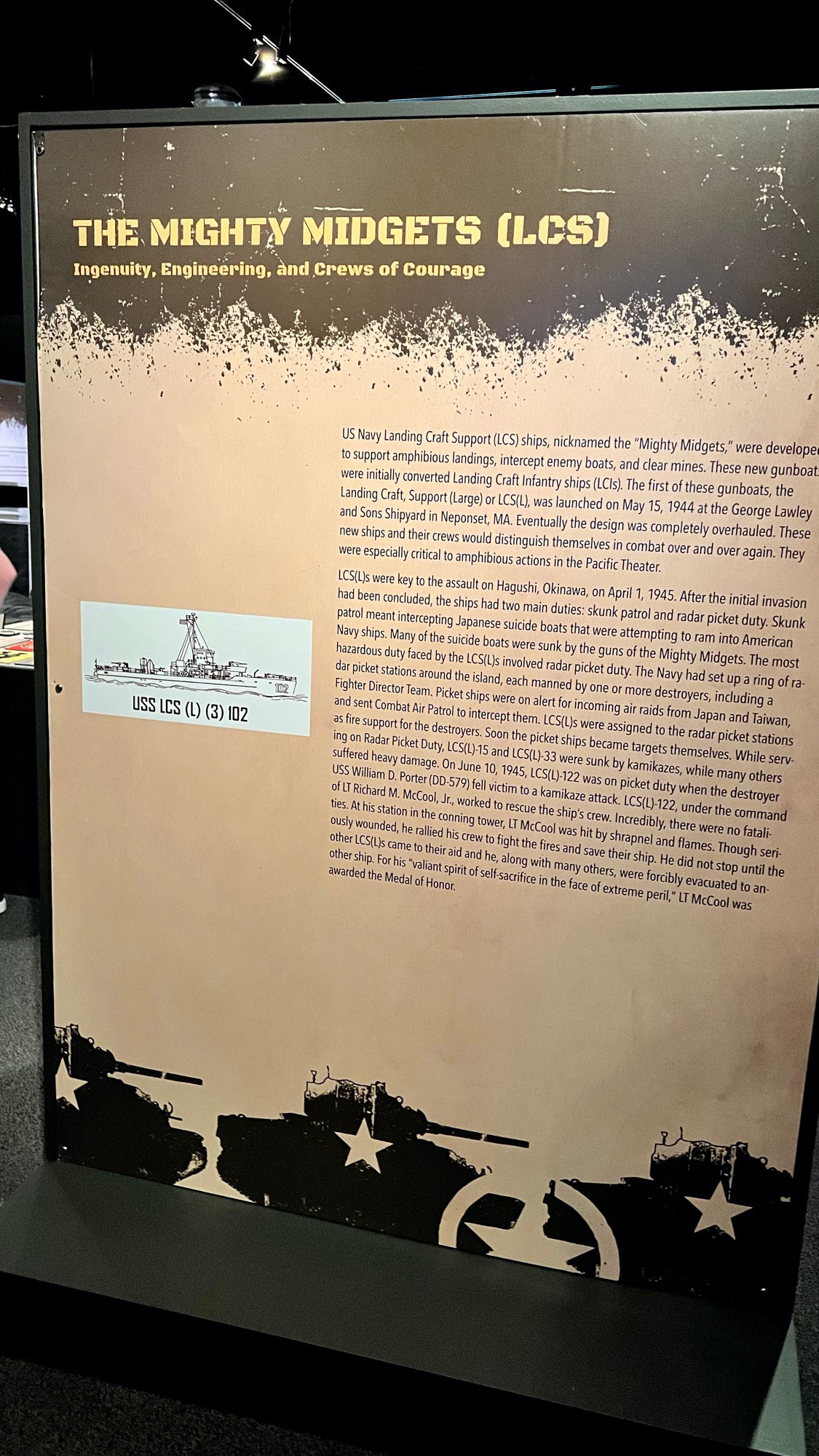
Ingenuity, Engineering, and Crews of Courage
US Navy Landing Craft Support (LCS) ships, nicknamed the "Mighty Midgets," were developed to support amphibious landings, intercept enemy boats, and clear mines. These new gunboat were initially converted Landing Craft Infantry ships (LCIs). The first of these gunboats, the Landing Craft, Support (Large) or LCS(L), was launched on May 15, 1944 at the George Lawley and Sons Shipyard in Neponset, MA. Eventually the design was completely overhauled. These new ships and their crews would distinguish themselves in combat over and over again. They were especially critical to amphibious actions in the Pacific Theater.
LCS(L)s were key to the assault on Hagushi, Okinawa, on April 1, 1945.
After the initial invasion had been concluded, the ships had two main duties: skunk patrol and radar picket duty.
- Skunk patrol meant intercepting Japanese suicide boats that were attempting to ram into American Navy ships. Many of the suicide boats were sunk by the guns of the Mighty Midgets.
- The most hazardous duty faced by the LCS(L)s involved radar picket duty. The Navy had set up a ring of radar picket stations around the island, each manned by one or more destroyers, including a Fighter Director Team. Picket ships were on alert for incoming air raids from Japan and Taiwan, and sent Combat Air Patrol to intercept them. LCS(L)s were assigned to the radar picket stations as fire support for the destroyers. Soon the picket ships became targets themselves.
While serving on Radar Picket Duty, LCS(L)-15 and LCS(L)-33 were sunk by kamikazes, while many others suffered heavy damage. On June 10, 1945, LCS(L) 122 was on picket duty when the destroyer USS William D. Porter (DD-579) fell victim to a kamikaze attack. LCS(L)-122, under the command of LT Richard M. McCool, Jr., worked to rescue the ship's crew. Incredibly, there were no fatalities. At his station in the conning tower, LT McCool was hit by shrapnel and flames. Though seriously wounded, he rallied his crew to fight the fires and save their ship. He did not stop until the other LCS(L)s came to their aid and he, along with many others, were forcibly evacuated to another ship. For his "valiant spirit of self-sacrifice in the face of extreme peril," LT McCool was awarded the Medal of Honor.
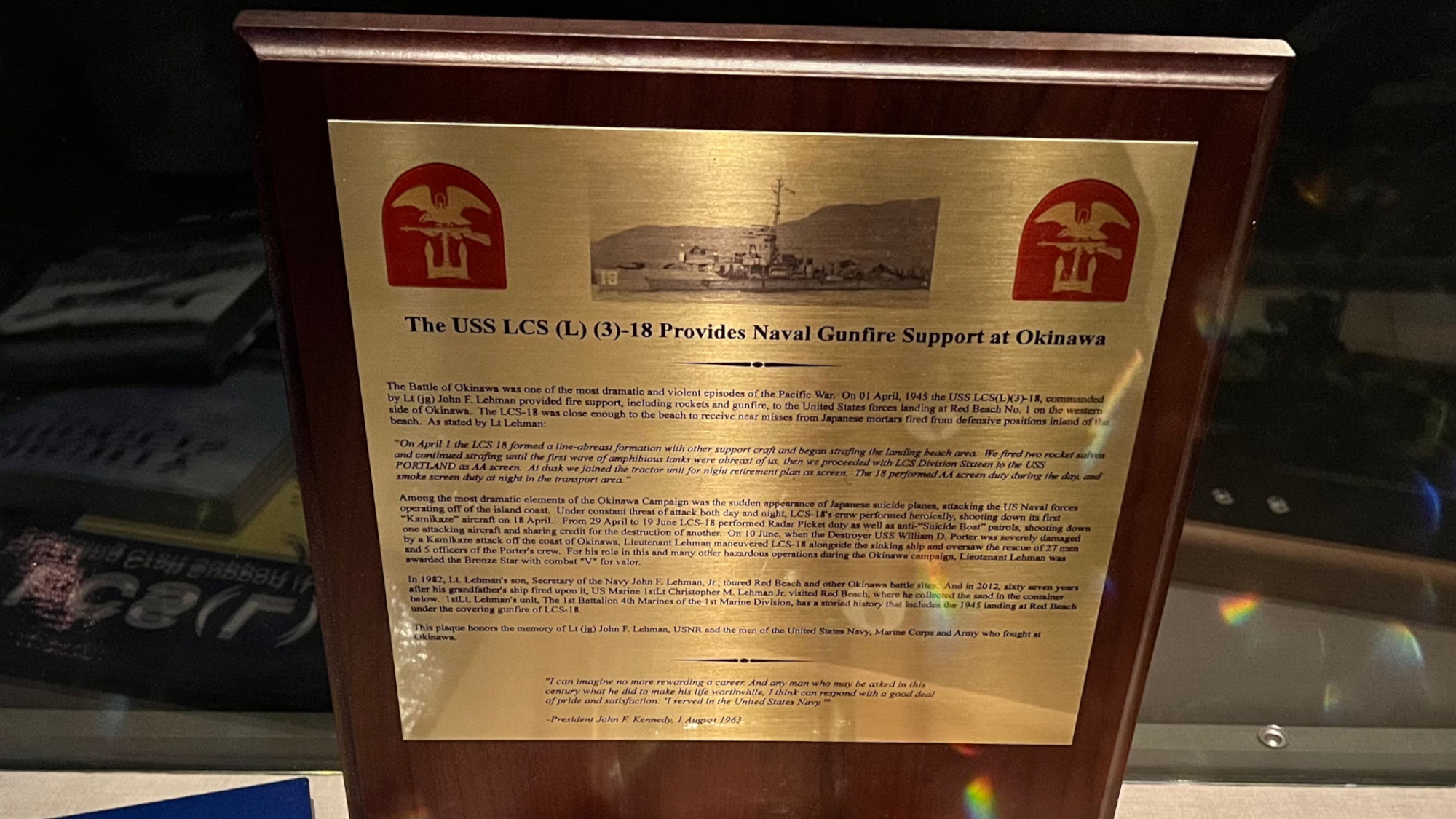
The Battle of Okinawa was one of the most dramatic and violent episodes of the Pacific War. On 01 April, 1945 the USS LCS(L)(3)-18, commanded by Lt (Jg) John F. Lehman provided fire support, including rockets and gunfire, to the United States forces landing at Red Beach No. 1 on the western side of Okinawa. The LCS-18 was close enough to the beach to receive near misses from Japanese mortars fired from defensive positions inland of the beach. As stated by Lt Lehman:
On April 1 the ICS 18 formed a line-abreast formation with other support craft and began strafing the landing beach area. We fired two rocket salvos and continued strafing until the first wave of amphibious tanks were abreast of us, then we proceeded with LCS DIvision Sixteen to the USS PORTLAND as AA screen. At dusk we joined the tractor unit for night refinement plan as screen. The 18 performed AA screen duty during the day and smoke screen duty at night in the transport area.
Among the most dramatic elements of the Okinawa Campaign was the sudden appearance of Japanese suicide planes, attacking the US Naval forces operating off of the island coast. Under constant threat of attack both day and night. LCS-18's crew performed heroically, shooting down its first "Kamikaze" aircraft on 18 April. From 29 April to 19 June LCS-18 performed Radar Picket duty as well as anti-"Suicide Boat" patrols, shooting down one attacking aircraft and sharing credit for the destruction of another. On 10 June, when the Destroyer USS William D. Porter was severely damaged by a Kamikaze attack off the coast of Okinawa, Lieutenant Lehman maneuvered LCS-18 alongside the sinking ship and oversaw the rescue of 27 men and 5 officers of the Porter's crow. For his role in this and many other hazardous operations during the Okinawa campaign, Lieutenant Lehman was awarded the Bronze Star with combat "V" for valor.
In 1982, Lt. Lehman's son, Secretary of the Navy John E, Lehman, Jr. toured Red Beach and other Okinawa battle sites. And in 2012, sixty seven years after his grandfather's ship fired upon it, US Marine 1stLt Christopher M. Lehman Jr. visited Red Beach, where he collected the sand in the container below. 1stLt. Lehman's unit, The 1st Battalion 4th Marines of the 1st Marine Division, has a storied history that includes the 1945 landing at Red Beach under the covering gunfire of LCS-18.
This plaque honors the memory of Lt (Jg) John P. Lehman, USNR and the men of tho United States Navy. Marine Carps, and Army who fought at Okinawa.
I can imagine no more rewarding a career. And any man who may be asked in this century what he did to make his life worthwhile, I think can respond with a good deal of pride and satisfaction: "I served In the United States Navy"- President John F Kennedy, 1 August 1963
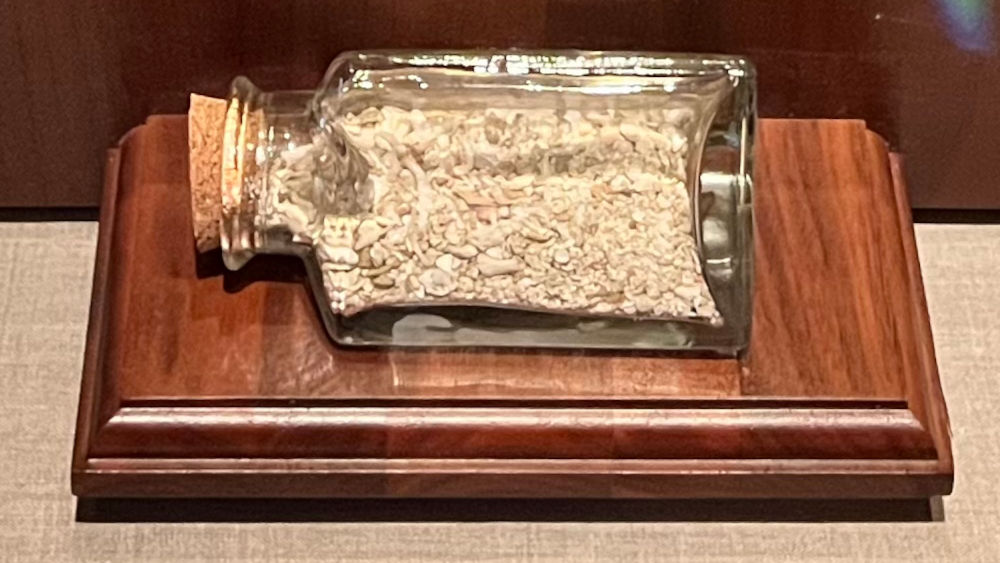
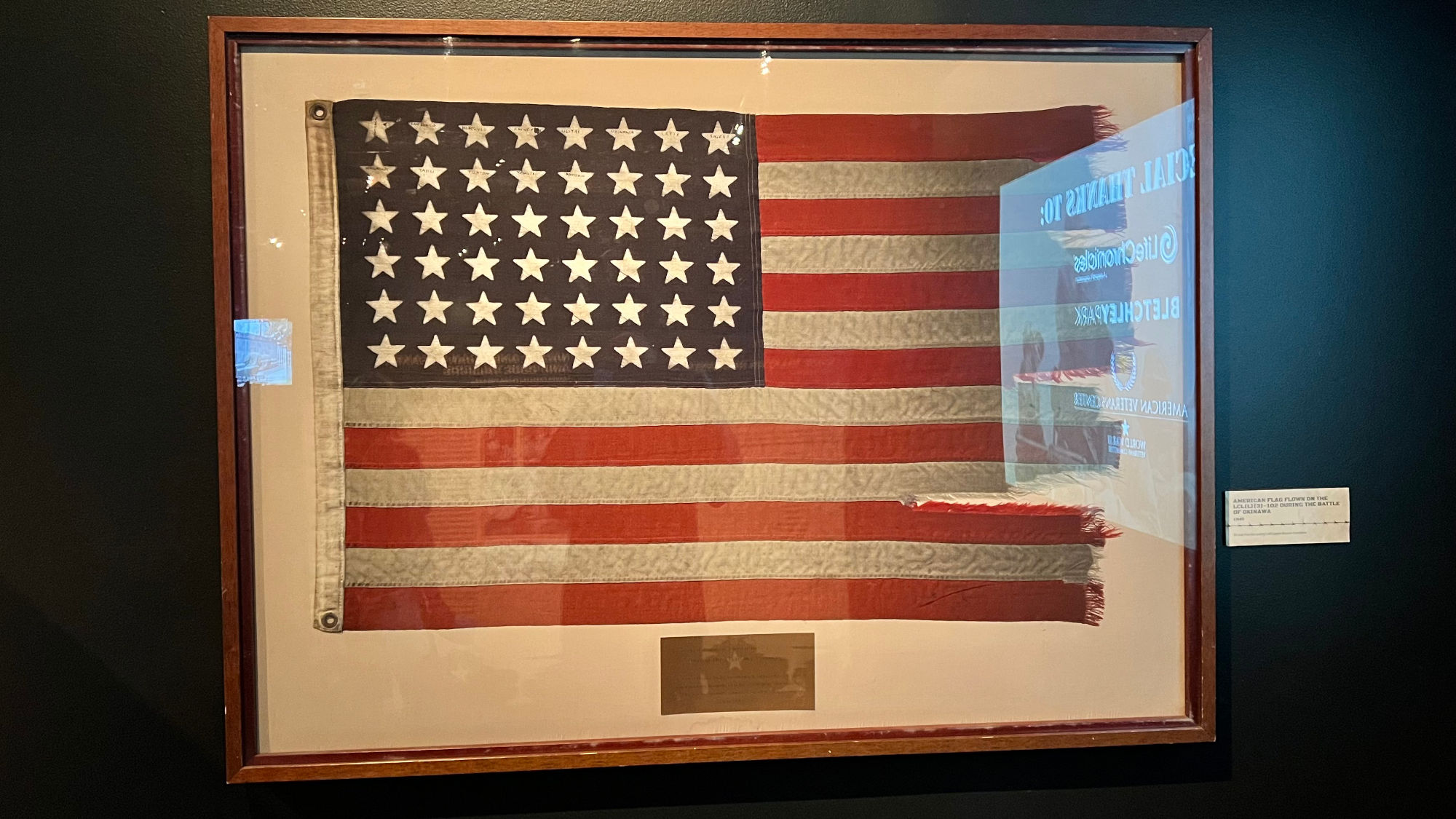
1945
National Ensign Flown by LCS (l) 102
During the Okinawa CampaignAfter the Battle of Okinawa, this flag was ordered to be replaced with a new flag by the Captain in preparation for entering Tokyo Bay. An enterprising sailor related the original flag with the ship's battles and ports of call and then stowed away it for safekeeping - for 62 years
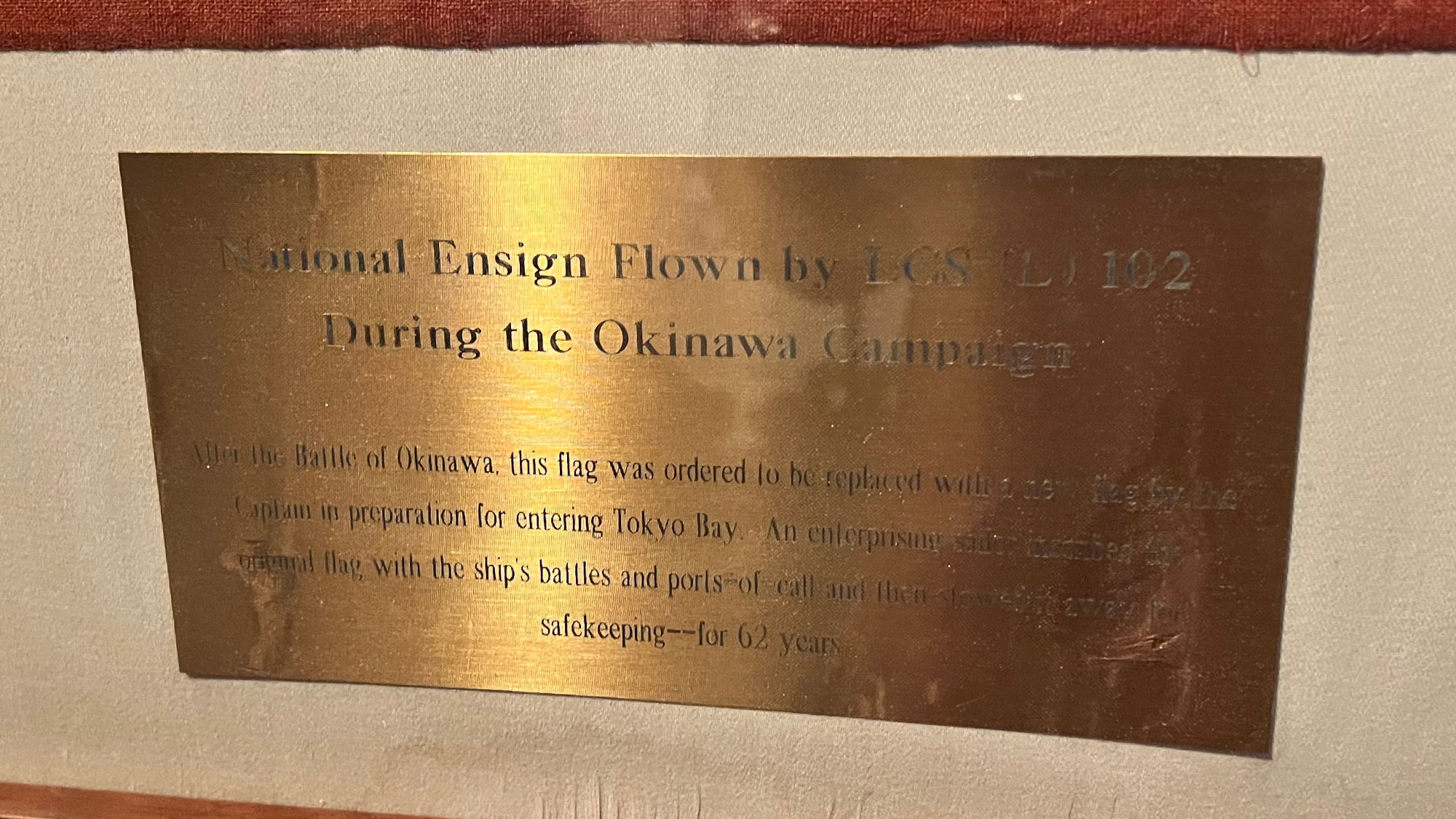
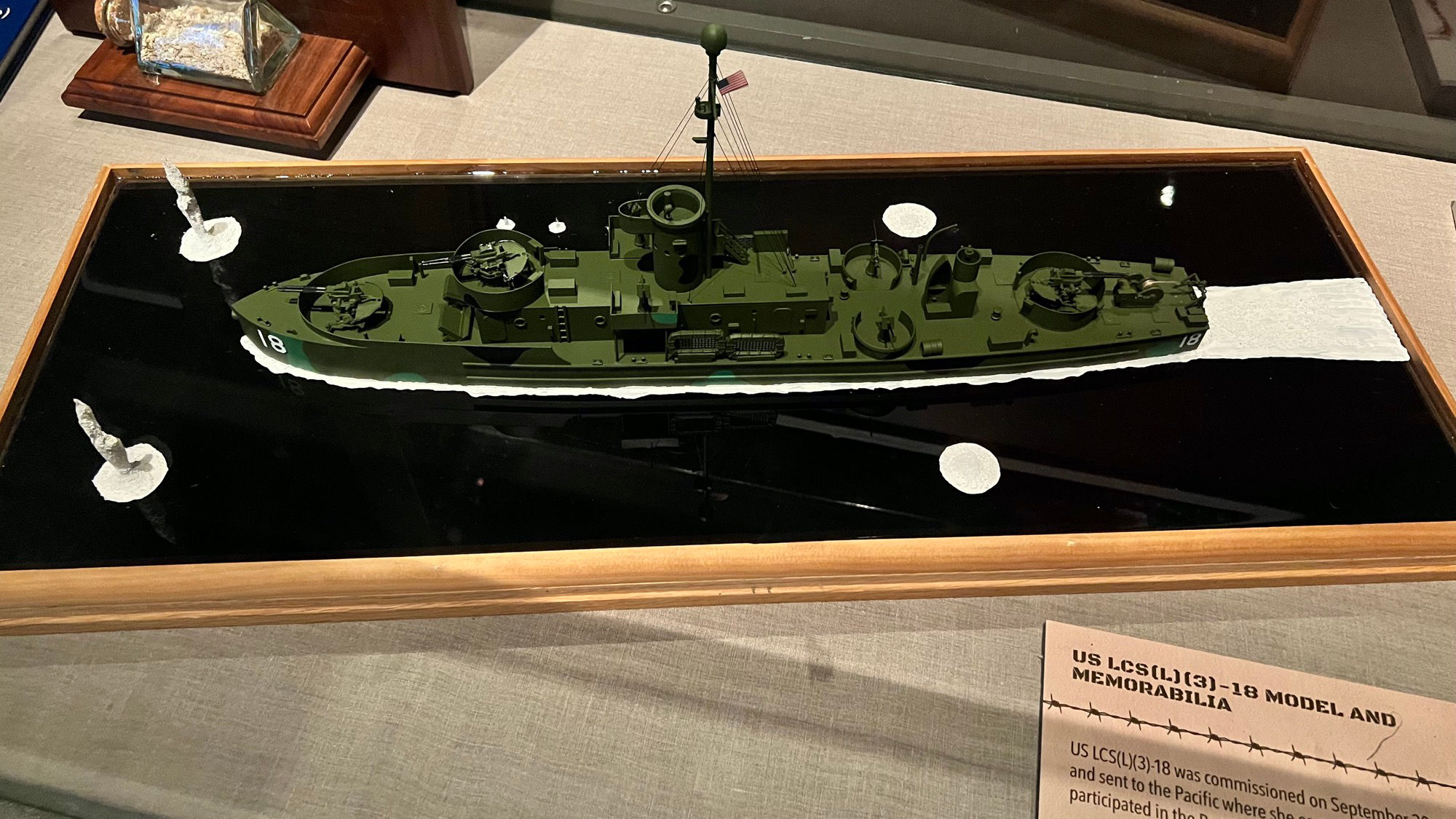
Commissioned on September 30, 1944 and sent to the Pacific where she earned two battle stars. She participated in the Battle of Okinawa.
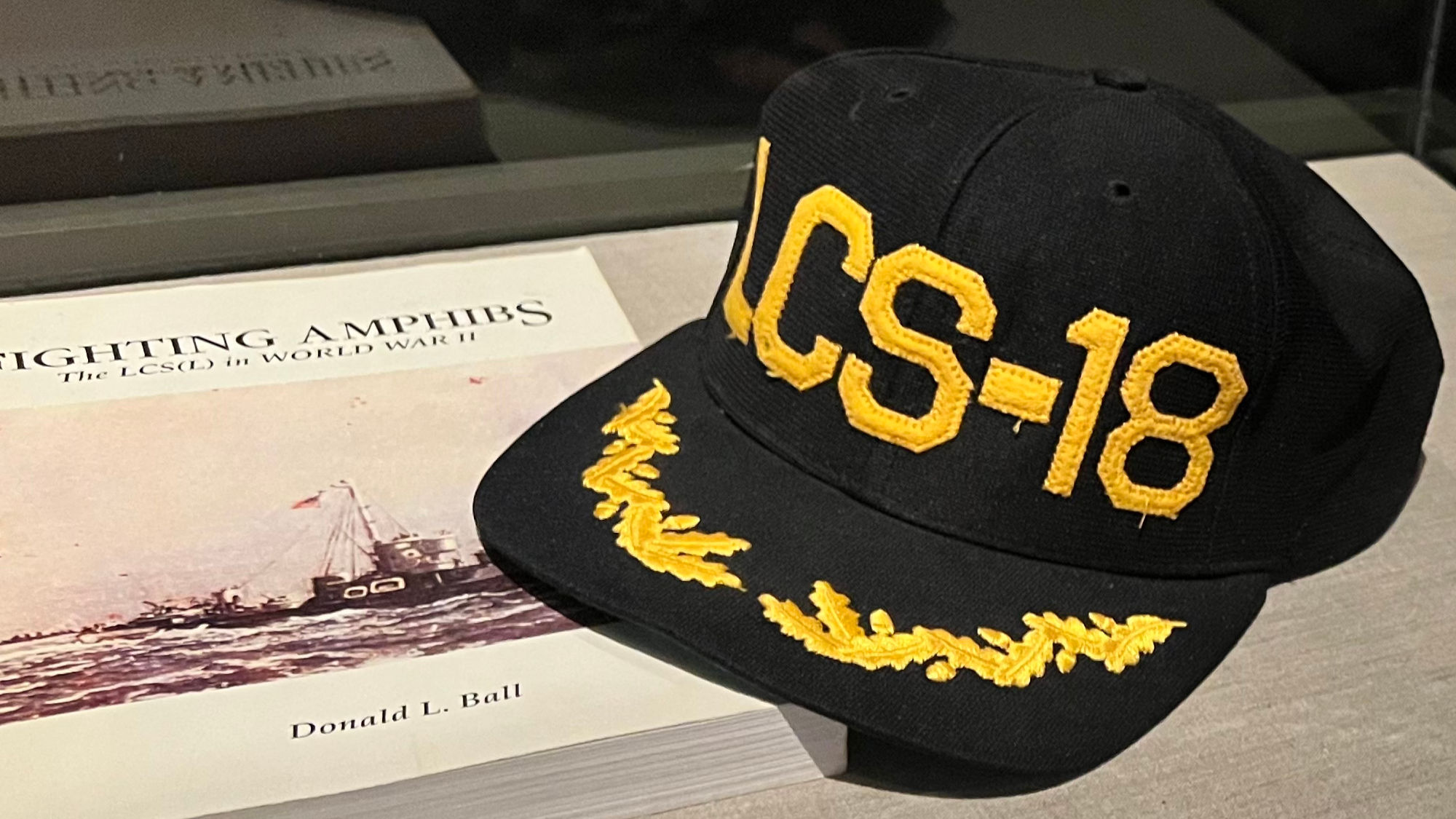
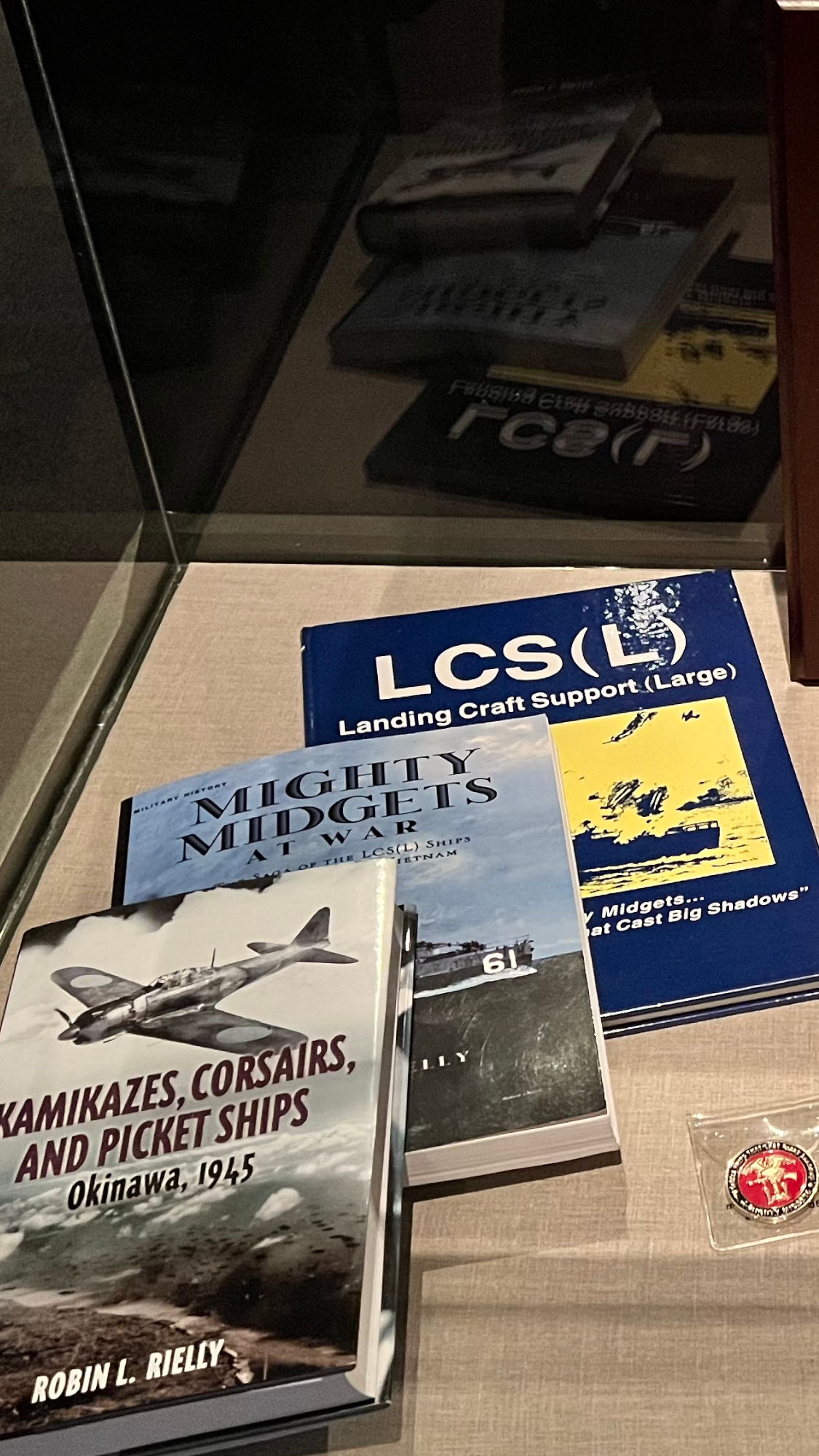
WIKIPEDIAThe Landing Craft, Support (Large)
Were two distinct classes of amphibious warfare vessels were used by the United States Navy (USN) in the Pacific and the Royal Navy in World War II. The USN versions which were later reclassified Landing Ship Support, Large also performed radar picket duty and fire fighting.The original designation for the ships was LCS(L)(3), which stood for "Landing Craft Support (Large) Mark 3". In 1949 the class was reclassified to "Landing Ship Support, Large" (LSSL). The United States Navy had to have the designation LCS(L) because there was also a smaller class named LCL, that were built mainly for rescue and smoke laying during amphibious operation.
A total of 130 were made. Three different ship building yards did the construction: George Lawley & Son (Neponset, Massachusetts); Commercial Iron Works (Portland, Oregon); and Albina Engine Works (Portland, Oregon). LCS(L) vessels could be produced in as little as 10 days, and final fitting out would take a further few weeks.
The LCS(L)(3) ships provided more firepower per ton than any ship ever built for the USN. Three guns and ten rocket launchers comprised the main armament. The bow gun was a 3"/50 caliber gun, a single 40 mm gun or a twin 40 mm gun. The forward and aft deck guns were twin 40 mm guns. The ten Mark 7 rocket launchers were situated behind the bow gun and forward deck house. Four 20 mm cannons were also mounted.
During World War II, five LCS(L)(3)s were sunk in combat (see below) and 21 were damaged. Three of these small warships received the Presidential Unit Citation, while six were awarded Navy Unit citations. Importantly, Lieutenant Richard M. McCool, skipper of USS LCS(L)(3) 122, was awarded the Medal of Honor.
- LCS(L)(3)-7, LCS(L)(3)-26 and LCS(L)(3)-49 were sunk by suicide boats off Mariveles, Corregidor Channel, Luzon, Philippine Islands, on 16 February 1945.
- LCS(L)(3)-15 was sunk by kamikaze aircraft off Okinawa, Ryukyu Islands, on 22 April 1945.
- LCS(L)(3)-33 was sunk by a kamikaze on 12 April 1945 at RP position No1.


